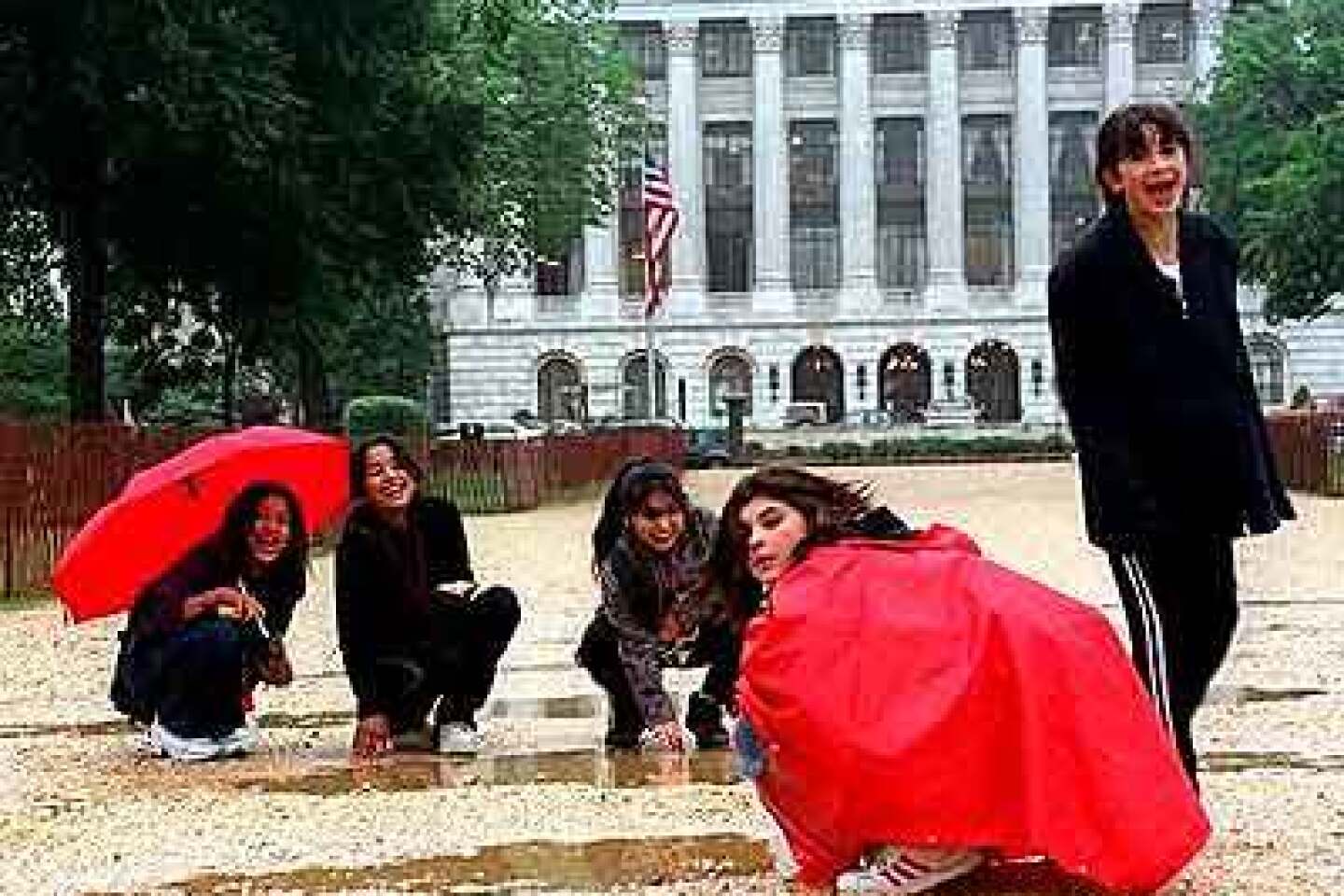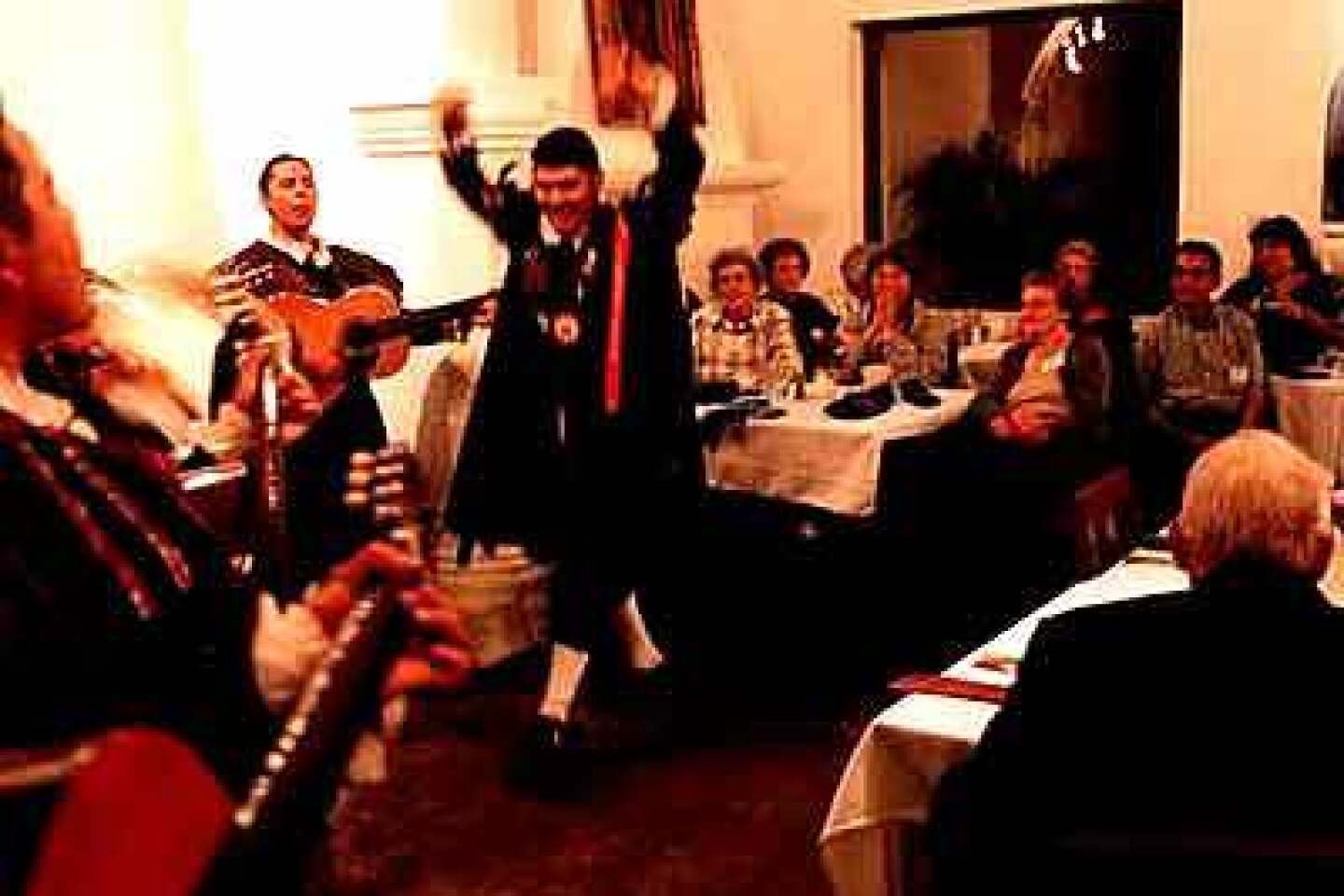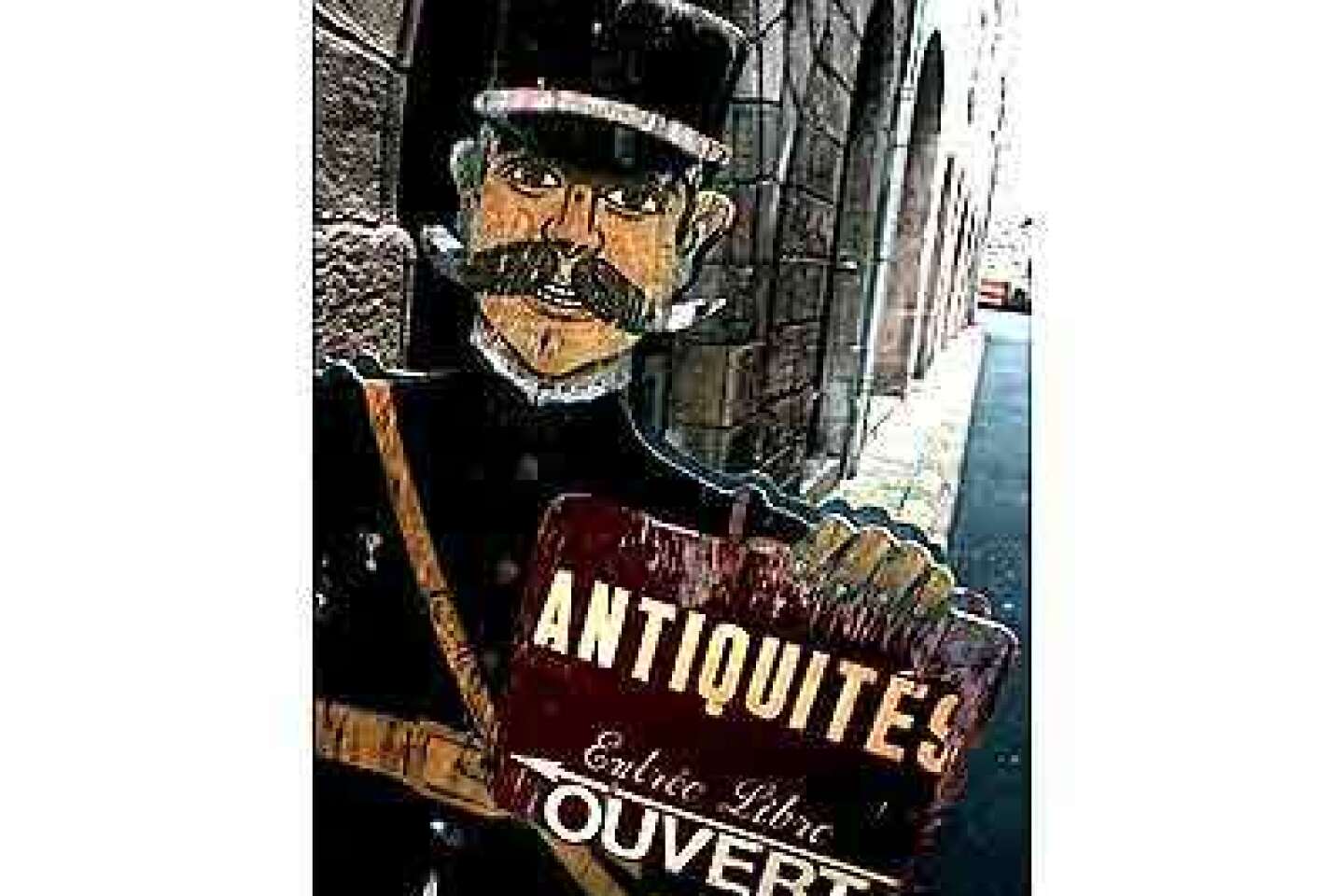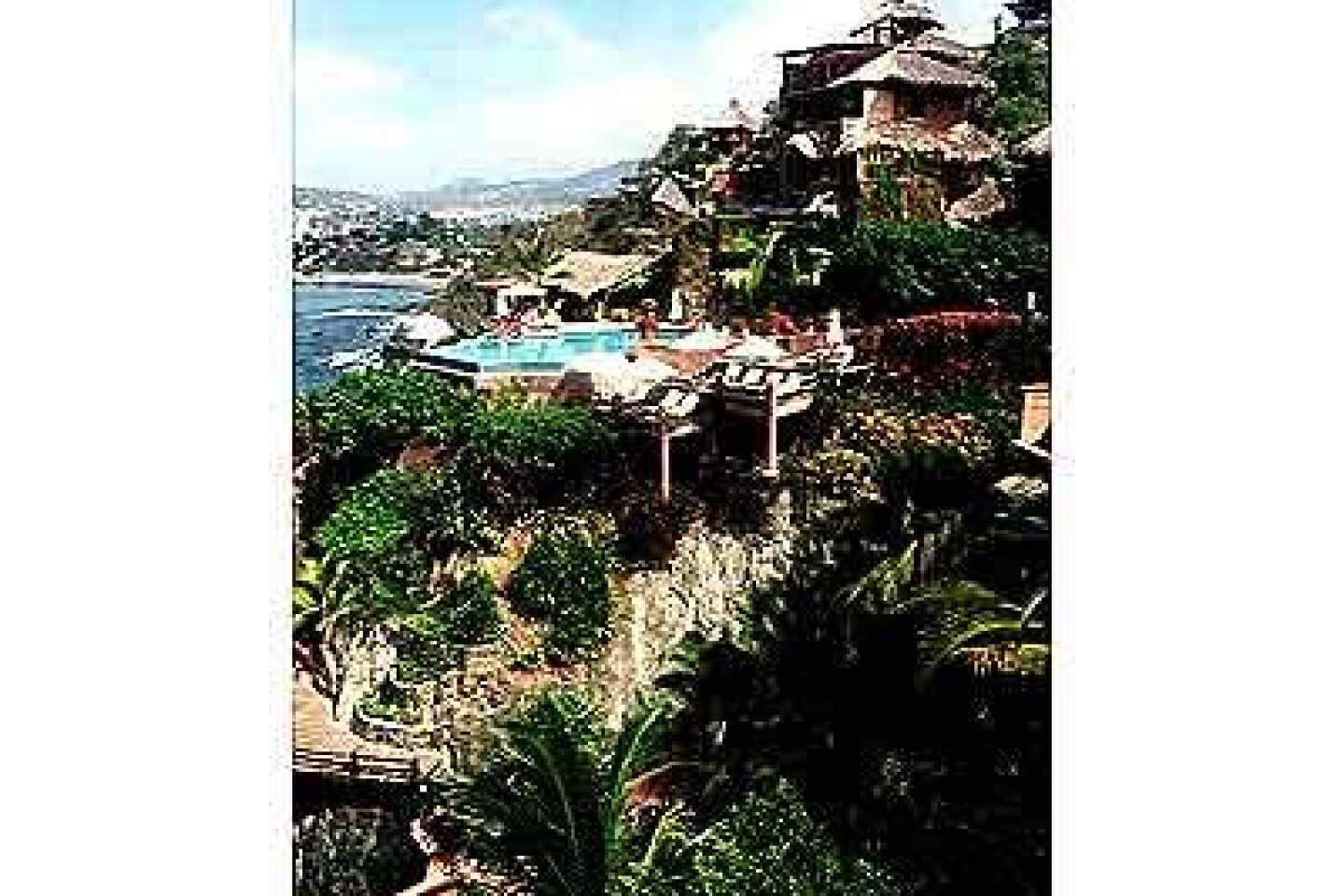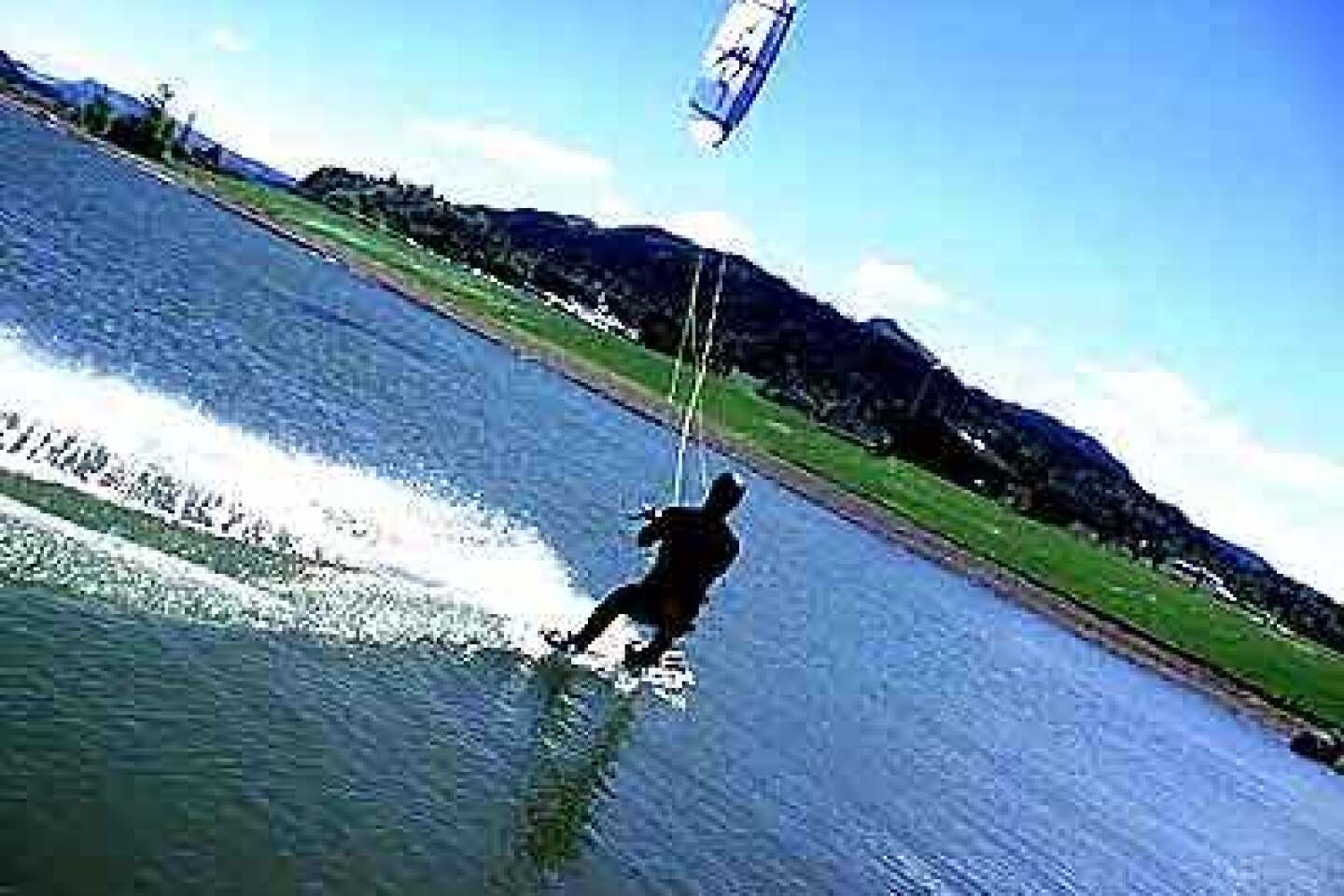Looking Back
- Share via
I see a man selling jumping beans, and in the background, several Americans lounging in the shade of Mexico’s Sierra Madre. I see a $67-a-night, 13th century French country inn and a cave full of paintings made 25,000 years ago. I see all manner of wind-driven watercraft on the Columbia River, all types of twirling contra dancers in a North Carolina gymnasium, and a New Mexico sunset of thunderheads and glinting steel.
What I hear along with this highlight reel of 2001, unfortunately, is a chorus of authoritative voices telling us that we live in a different world now, that travel will come back slowly, that since Sept. 11 people are thinking twice before they leave the ground, or the U.S.
Still, the hope here is that what I found on the road in 2001, in old Mexico, New Mexico, Appalachia, the Virgin Islands, the north of Oregon, the south of France, the middle of California and beyond, will help steer you toward some place you’ll like, or away from some place else you wouldn’t.
Adding the trips up, I find about 40 road nights this year, fewer than in previous years, partly because of those stay-at-home weeks after Sept. 11, partly because I’ve been on a special assignment to the Calendar section for much of the last two months. Nevertheless, I have plenty of highlights and pronouncements to offer.
First, put this picture in your head: the high, flat San Agustín Plain in central New Mexico, with no buildings for miles except the log cabin at your back. The only sound was thunder. This is mybest night on the road in 2001.
The sun had just dipped into a narrow slot between approaching western storm clouds and the skyline of far-off mountains, and golden beams raked across the high desert dirt and scrub.This moment--which my wife, Mary Frances, and I enjoyed as part of a New Mexico road trip--would have been pleasant and profound enough if that were all there was to it. But between us and the vast plains outside Quemado, N.M., stood a singular piece of art by Walter de Maria (he calls it a sculpture): a field of 400 precisely spaced steel lightning rods, a mile across and a kilometer long in a rectangular grid, placed in 1977. At noon on this late June day, they had been barely noticeable. But at that moment, in the raking sun, they gleamed like a neon apparition and made us wonder about nature and order and stillness and meteorology.
Then came the dark and the lightning, and an evening of illuminating conversation with the two other couples, who had rented the other bedrooms.
This is the experience visitors hope for when they sign up to stay at the Lightning Field, operated by the New York-based Dia Center for the Arts from field offices in New Mexico, (505) 898-3335,
Favorite Mexican town: I mentioned Americans in the shade of the Sierra Madre. These were the expats of Alamos, which is also the jumping-bean capital of North America. I found the expats, the beans and a vital bit of Los Angeles history in the Mexican state of Sonora, about 400 miles south of the Arizona-Mexico border.
Alamos is not to be confused with Los Alamos, N.M., nor does it offer the features that usually make Mexican towns popular with Americans: no beach, no golf, no T-shirt shops. Basically, there’s little to do but watch birds, wander the hills, maybe float on the Río Mayo--and admire the colonial architecture and the fun some Americans have had fixing up old haciendas as getaway homes. (There’s a house tour most weekends.) The nearest airport is in Ciudad Obregón, 60 miles northwest, and it’s a seven-hour drive from Nogales, Ariz. Alamos has fewer than 200 hotel rooms.
The town dates to Spanish settlement in the 17th century. The city’s population is about 8,000, and its architecture is protected by the same preservation laws that maintain the pre-20th century look of central San Miguel de Allende (closer to Mexico City, in the state of Guanajuato). Alamos does have an American expat community that goes back about 50 years, but the expats I met were mostly older or quieter than those I’ve found in coastal towns. Further, because Alamos’ oldest neighborhood is dominated by private residences instead of businesses, the center of town is often eerily quiet. I liked the stateliness of it all and the odd L.A. connection.
Which is this: Starting in 1683, when silver was discovered nearby, Alamos grew to about 30,000, and Spanish colonists began to use it as a launching point for expeditions to start missions along the California coast. On Feb. 2, 1781, about a dozen families set off from Alamos on one such assignment. It took more than five months to reach their destination, an area in Alta California near the Mission San Gabriel. They called the place Los Angeles and started building a city. I’m surely not the first Angeleno to make the reverse pilgrimage, but sometimes I like to imagine I am.
Three good places to start studying up on Alamos: a lodging and restaurant called Puerta Roja Inn, 011-52-647-428-0142,
Best European value: This is where the 25,000-year-old cave paintings come in. I found them in the south of France, in the gorgeous, rolling countryside along the Lot River, about 350 miles (or a five-hour train ride) south of Paris.
In four nights of wandering such towns as Cahors, Figeac and Conques, I never spent more than $70 a night on lodgings, tax included. In the last few years, several bicycle touring companies have begun taking groups to the area, but even the most attractive little towns--even Saint-Cirq Lapopie, which clings dramatically to a hilltop--close many of their tourist facilities from November through April.
In Saint-Cirq Lapopie, population 200, I stayed at Hôtel de la Pélissaria, 011-33-5-6531-2514, my favorite lodging for the year. (The hotel is closed for the season.) Even if it had cost more than $67 a night, I would sing its praises. It has 10 rooms, stands along a narrow road up to the top of town and looks out over a valley that sprawls in full French rural splendor: a river winding through green fields, a farmhouse or two, a mill, a few big, jutting rocks.
Another part of the same area’s odd geography is its network of caves. The best known, the Pech-Merle cave, has been found, forgotten and found again many times in the last two dozen millenniums. The most recent rediscovery was in 1922, when two schoolboys and a supervising priest found an underground path that led to a 62 million-year-old cavern and some of the oldest paintings in the world.
The paintings, in black and red, show horses, bison, mammoths and the stenciled open hands of the artists. Scientists estimate that the red images are 25,000 years old; the black images, 20,000.
My favorite meal: There were no bad meals in the south of France, of course. But I keep coming back to a dinner in the courtyard of the Casa Que Canta, an earthen-walled wonder of a hotel that clings to a cliffside over the Pacific in Zihuatanejo, Mexico. Seated on a terrace under trees strewn with tiny lights, I took on a $40, six-course chef’s tasting menu that included tuna sashimi, shrimp tamales and a dessert of pear in white wine and chocolate sauce. The top runner-up: a plate of wild mushroom ravioli with apple sausage, served at the bar of Paradiso restaurant on the U.S. Virgin Island of St. John.
My least favorite meal: There were several of them, actually, all served in the dining hall of Christ Church, Oxford, England. For a story that ran in January, I spent a week the previous summer at Christ Church studying the fall of the British empire under a program for foreigners called the Oxford Experience. The program was excellent--and the dining hall is a 16th century building grand enough to shame most American cathedrals. But one evening’s main course was so murky and mysterious that debate arose. This, said some (including me), was lasagna. No, others said, it was moussaka. Days later, on a tour of the kitchen, I found a copy of the chef’s schedule. Moussaka.
Best souvenir: As usual, I picked up plenty of remembrances this year, but it’s easy to choose my favorite: the handmade guitar from Paracho, Mexico, a mountain town in the state of Michoacán where about 80,000 guitars a year are produced. I arrived during the peak of the town’s summer festival and spent several days nosing through the shops of guitar-makers. I handed over $400 in pesos to Manuel Hernández, who handed back a nylon-stringed wonder of cedar, rosewood, ebony and a gorgeous striped Mexican wood known as palo escrito. Apart from its rich, resonant sound, I like the sawdusty whiff of Paracho in mid-fiesta I get whenever I open the case.
Closer to home, 2001 took me to several striking U.S. destinations. Besides that lightning field in New Mexico, there were highlights:
Hood River, Ore., stood out as possibly the sportiest spot in the country. The city has only about 5,000 residents, but you can find wind surfing, kite boarding, kayaking, rafting and canoeing on the Hood, White Salmon, Klickitat and Deschutes rivers, all of which run near town. There’s mountain biking just as close, in the forests and the handsome Hood River Valley. And Portland is 60 miles west on Interstate 84.
In Asheville, N.C., I found the most intriguing laboratory of American culture I’ve ever encountered: These days, the area’s wealth of Appalachian heritage, from wood crafts to acoustic music, is sustained largely by a population of elective Appalachians--Americans who have studied up and moved to Asheville from points north, south, east and west.
And in Washington, D.C., I was reminded of the best reason for traveling: perspective.In May I trailed two busloads of Los Angeles fifth-graders as they made landmark-and-museum rounds in the nation’s capital. Our itinerary didn’t include the Pentagon. But every block or two, we came across more of the ideas and machinery that underlie their morning Pledge of Allegiance, from the Lincoln Monument to the Smithsonian museums.Some artifacts were in tatters under museum glass (like the flag that inspired Francis Scott Key to write the national anthem). Some were of a more informal nature, like the pretzel that student Colin Hansen found on the floor during the White House tour and saved until ... well, as of early December, when I last spoke with Colin, the pretzel was still in a plastic bag in his family’s fridge.
We took a group photo on the Capitol steps and ran into a surprise on our last night: the violent booming of a harmless thunderstorm.
Looking back through the lens of Sept. 11, I know there’s plenty to Washington and U.S. history that no 10-year-old could absorb in five days, and there’s plenty about those four crashed planes that resists comprehension, no matter your age. But because they stood in the Capitol, saw what they saw and heard what they heard, those students have a little more information and a little more context. They have a better idea of what was at risk on Sept. 11, what remains at risk every day in a democracy, and what a remarkable bargain is struck every time an American pledges allegiance.
More to Read
Sign up for The Wild
We’ll help you find the best places to hike, bike and run, as well as the perfect silent spots for meditation and yoga.
You may occasionally receive promotional content from the Los Angeles Times.
